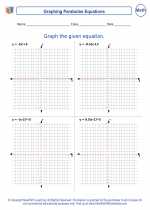Analyzing Data
When we talk about analyzing data, we are referring to the process of interpreting, organizing, and summarizing data to extract meaningful insights and make informed decisions. This process involves using various mathematical and statistical techniques to understand the patterns, trends, and relationships within the data.
Key Concepts:
1. Data Collection: Gathering information through surveys, experiments, observations, or existing sources.
2. Data Organization: Structuring the data in a meaningful way, such as tables, graphs, or charts.
3. Data Analysis: Applying mathematical and statistical methods to identify patterns and draw conclusions from the data.
4. Interpreting Results: Drawing meaningful insights and conclusions based on the analysis.
Statistical Techniques:
1. Measures of Central Tendency: Mean, Median, and Mode.
2. Measures of Dispersion: Range, Variance, and Standard Deviation.
3. Correlation and Regression: Understanding the relationship between variables.
4. Probability: Assessing the likelihood of events occurring.
Study Guide:
To effectively analyze data, it's important to follow a structured approach:
- Understand the Data: Familiarize yourself with the type of data (quantitative or qualitative), its source, and any limitations or biases.
- Data Cleaning: Remove any inconsistencies, errors, or outliers from the dataset to ensure accuracy.
- Choose Appropriate Methods: Select the right statistical techniques based on the nature of the data and the research questions.
- Visualize the Data: Create visual representations such as histograms, scatter plots, or box plots to identify patterns and trends.
- Apply Statistical Analysis: Calculate descriptive statistics, perform hypothesis tests, or conduct regression analysis as required.
- Interpret the Results: Draw conclusions and make inferences based on the analysis, and consider the implications for decision-making.
By mastering the art of analyzing data, you can gain valuable insights that drive informed decision-making in various fields such as business, science, and social research.
.◂Math Worksheets and Study Guides Seventh Grade. Nonlinear Functions and Set Theory

 Worksheet/Answer key
Worksheet/Answer key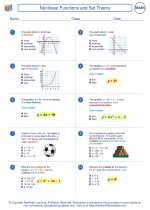
 Worksheet/Answer key
Worksheet/Answer key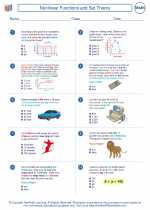
 Worksheet/Answer key
Worksheet/Answer key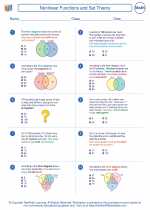
 Worksheet/Answer key
Worksheet/Answer key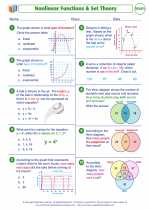
 Worksheet/Answer key
Worksheet/Answer key